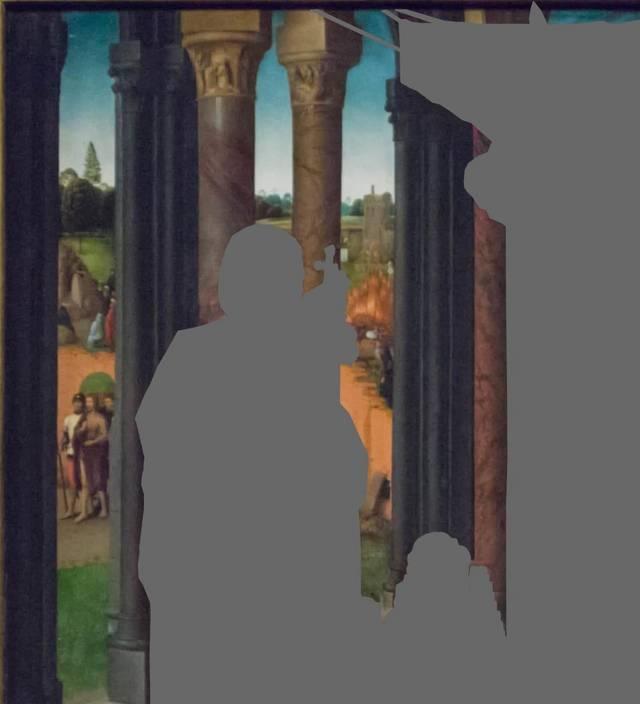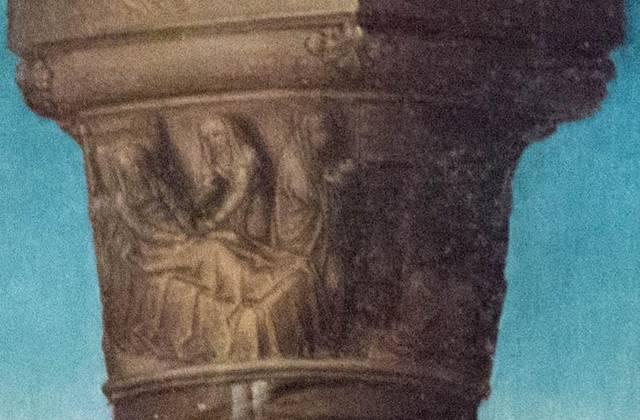scenes from the legends of John the Baptist and John the Evangelist according to The Golden Legend
We follow here each of two stories on which Memling probably based himself as Jacobus da Varagine reports them in The Golden Legend.
As, in the scenes Memling painted, these texts are faithfully represented, we invite those who would like to feel more deeply the relationship of the triptych to the various texts to read them directly:
- read: text of the Legend of John the Baptist from chapter 9 of The Golden Legend,
- read: text of the Legend of John the Evangelist before the Latin Gate from chapter 65 of The Golden Legend.
scenes from the legend of John the Baptist according to The Golden Legend
We begin with John the Baptist who, in chronology, precedes John the Evangelist.
In the upper left corner of the background of the central panel and on the left inner shutter appear scenes of his life and martyrdom.

John the Baptist according to historical documents
Historically, John is described as a jewish preacher in Galilee of this time of Jesus of Nazareth according to the testimony of Flavius Josephus, a 1st century roman jewish historian (“Jewish Antiquities”, book XVIII, chapter 5, paragraph 118).
Galilee at that time was a province of the roman empire that experienced many revolts.
Its population, mainly jewish, is very religious; the biblical writings announce the coming of an envoy of god whose action will enable the jewish people to recover their independence and religious organization, in particular to rebuild Solomon's temple in Jerusalem.
John the Baptist according to the texts of the Christian faith
In terms of christian faith, John is, according to Luke's gospel (chapter 1 verses 5 to 25), the son of Zechariah, an old jewish priest from the galilean countryside to whom god himself announces by the archangel Gabriel the birth of John when he was chosen by chance to go to Jerusalem and prays in the temple.
Scene of Gabriel's appearance to Zechariah on the left capital
That's how Memling represents him on the left capital.

The text indicates that because of that Zechariah loses his ability to speak.
Scene of the birth of John on the right capital
His birth is represented on the capital placed on the right.

Choice of the name of John by Zechariah
The name of this son, «John», is also one of the issues in the story (Luke chapter 1 verses 59 to 63):
«It happened on the eighth day, that they came to circumcise the child; and they would have called him Zechariah, after the name of the father. His mother answered,
“Not so; but he will be called John.”
They said to her,
“There is no one among your relatives who is called by this name!”
They made signs to his father, what he would have him called.
Zechariah asked for a writing tablet, and wrote,
“His name is John.”»
From the point of view of faith, John the Baptist therefore comes into the world according to god's will.